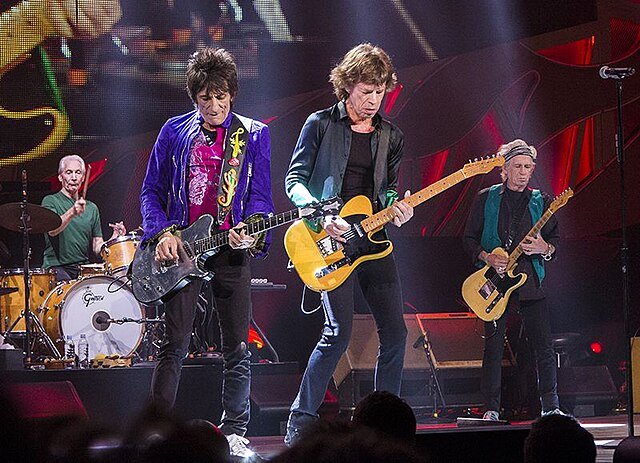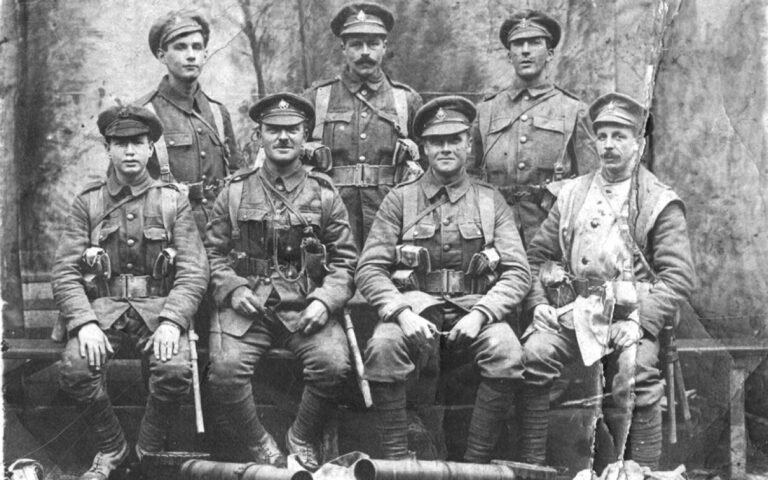The Swinging Sixties was a decade of change. Vibrant, bold, and full of life.
This era shook the world with its cultural revolutions. It was a time of music, fashion, and freedom. The Sixties were marked by the rise of iconic bands. Think Beatles. And Rolling Stones. It was also a time of political shifts.
The civil rights movement gained strength. Women fought for equality. The world watched as astronauts landed on the moon. The Swinging Sixties was not just a decade; it was a mindset. People embraced new ideas and ways of living. They broke old norms. They explored creativity and expression. This introduction sets the stage for understanding the impact and legacy of the Sixties. A time that forever changed history.

Credit: theconversation.com
Cultural Shifts
The Swinging Sixties were a decade of profound cultural shifts. Society embraced new ideas, breaking away from traditional norms. This era was marked by significant transformations in music, fashion, and social attitudes. It was a time of great change and excitement.
Music Revolution
The 1960s saw a major transformation in music. Bands like The Beatles and The Rolling Stones became household names. Their music inspired a generation and changed the industry forever. Rock and roll was at its peak, influencing every corner of the globe. Folk music also gained popularity, with artists like Bob Dylan leading the charge. Music festivals like Woodstock became cultural landmarks of the era.
Fashion Transformations
Fashion in the 1960s broke many barriers. The miniskirt, popularized by designer Mary Quant, became a symbol of freedom. Bright colors and bold patterns dominated the scene. Fashion icons like Twiggy and Jackie Kennedy set new trends. The hippie movement embraced natural fabrics and laid-back styles. Fashion reflected the era’s spirit of change and rebellion.
Social Movements
The Swinging Sixties marked a vibrant era of social movements. People rallied for civil rights, peace, and equality. Youth culture thrived, challenging norms and sparking change across nations.
The Swinging Sixties was a decade teeming with energy and transformation, driven by vibrant social movements that reshaped society. These movements were not just historical events; they were the heartbeat of change, influencing everything from politics to personal identities. They gave ordinary people a voice and ignited a spirit of rebellion and hope.
The era paved the way for profound changes in civil rights, gender equality, and personal expression. As you dive into the stories of the 1960s, you’ll discover how these movements laid the groundwork for the modern world.
Civil Rights Struggle
The Civil Rights Movement was a powerful force in the 1960s, demanding justice and equality for African Americans. It wasn’t just about marching and speeches; it was about changing the way people thought and acted.
Imagine living in a world where you couldn’t sit at the same lunch counter as someone of a different race. This movement challenged such norms, leading to monumental changes like the Civil Rights Act of 1964.
Have you ever wondered how one person’s courage can inspire a nation? Think of Rosa Parks refusing to give up her seat, sparking a movement that would inspire countless others. The bravery of ordinary people like her showed that change was possible, one step at a time.
Feminist Awakening
The Feminist Movement of the 1960s was a pivotal moment for gender equality. Women began to question the roles society had assigned them and sought opportunities beyond the traditional.
Consider how far we’ve come since women were primarily seen as homemakers. The Feminist Awakening opened doors for women to pursue careers, education, and personal freedom.
This movement wasn’t just about women’s rights; it was about human rights. It challenged everyone to think about what equality truly means. As you reflect on the rights you enjoy today, remember those who fought tirelessly to make them a reality.
The 1960s taught us that social movements can redefine the world. They show that when people come together with a common goal, change isn’t just possible—it’s inevitable. What role can you play in today’s social movements, and how will history remember your contributions?
Political Changes
The Swinging Sixties brought significant political changes worldwide. Youth movements challenged traditional norms, advocating for civil rights and peace. Governments faced pressures to adapt to a rapidly changing society.
The Swinging Sixties was a decade of transformative political changes. This era was marked by a shift in global power dynamics and the rise of youth activism. Political landscapes were redrawn, and voices that had been long suppressed began to emerge with new vigor. As you look back at this pivotal decade, consider how these changes continue to influence today’s society.
Cold War Dynamics
During the 1960s, the Cold War was a constant backdrop to political changes worldwide. The tension between the United States and the Soviet Union influenced international policies and domestic concerns. It was a time when nuclear threats loomed large, and global alliances were tested.
The Cuban Missile Crisis in 1962 brought the world to the brink of nuclear war. The standoff between the U.S. and the Soviet Union highlighted the fragility of peace. It also underscored the necessity of diplomatic negotiation over military confrontation.
The space race was another Cold War dimension that spurred technological advancements. With the moon landing in 1969, the U.S. demonstrated its technological prowess. This not only marked a victory for the U.S. but also showcased how scientific progress could be a tool for political influence.
Youth Activism
The Sixties was a decade when young people became a potent political force. They challenged existing norms and demanded change. Their activism was a response to the rigid societal structures and political decisions of the older generations.
The Civil Rights Movement was a significant example of youth activism. Young leaders like Martin Luther King Jr. and John Lewis inspired a generation to fight for equality and justice. Their courage and determination led to significant legislative changes, such as the Civil Rights Act of 1964.
In addition to civil rights, the anti-war movement gained momentum as the Vietnam War escalated. Many young people protested against the draft and questioned the morality of the war. This activism brought attention to the human cost of political decisions and reshaped public opinion.
Have you ever wondered how different the world might be if the youth of the 1960s had remained silent? Their activism not only changed laws but also paved the way for future generations to speak up. As you reflect on the legacy of the Swinging Sixties, consider how you can be a catalyst for change today.
Technological Advances
The Swinging Sixties was a decade that sparkled with vibrant cultural shifts, but it also shone brightly with groundbreaking technological advances. These innovations not only transformed industries but also reshaped everyday life. From the thrilling space race to the rise of consumer electronics, technology in the ’60s laid the foundation for the modern world you know today.
Space Race
Imagine watching the first moon landing on a black-and-white television. The space race was a thrilling contest between the U.S. and the Soviet Union, pushing technological boundaries. It wasn’t just about reaching the moon; it was about igniting dreams and fostering innovation. The Apollo missions inspired a generation, proving that humanity could achieve the seemingly impossible. As you look up at the stars, ask yourself what dreams you can pursue with today’s technology.
Consumer Electronics
The ’60s marked the rise of consumer electronics that started entering homes. Think about the impact of the first color television—it transformed family gatherings and entertainment. Transistor radios became a personal favorite for many, allowing people to enjoy music anywhere. These gadgets were more than just devices; they were symbols of a changing lifestyle. Today, you might take your smartphone for granted, but consider how consumer electronics continue to shape your daily routine.
Technology in the ’60s wasn’t just about flashy devices or giant leaps. It was about connecting people and sparking curiosity. Look around and notice how these advances have evolved, yet still impact your world. What technological innovation do you think will define the next decade?
Artistic Expression
The Swinging Sixties was an era of vibrant creativity and change. This decade saw a burst of artistic expression across various fields. Artists, filmmakers, and musicians challenged norms and embraced new ideas. This cultural revolution left a lasting impact on art and cinema.
Pop Art Emergence
Pop Art became a defining feature of the 1960s. Artists drew inspiration from everyday objects and consumer culture. Andy Warhol and Roy Lichtenstein led this bold movement. They used bright colors and bold lines to capture attention. Their works questioned the boundary between art and life.
Warhol’s Campbell’s Soup Cans became iconic. He transformed ordinary items into celebrated art. Lichtenstein’s comic strip-inspired pieces sparked conversations. This art form embraced mass media and commercial imagery. It made art accessible and relatable to the public.
Cinema Innovations
The sixties transformed the film industry. Directors experimented with new techniques and storytelling methods. French New Wave filmmakers like Jean-Luc Godard influenced global cinema. They used jump cuts and on-location shooting for realism.
Hollywood also saw change with films like “Easy Rider.” This film reflected youth culture and counterculture movements. Technology advancements brought new possibilities. Color films and widescreen formats enhanced the cinematic experience. Audiences experienced movies in new and exciting ways.
Economic Trends
The Swinging Sixties marked a vibrant economic shift. Consumerism soared, fueled by rising incomes and youth-driven markets. Fashion, music, and technology industries thrived, reflecting cultural changes and economic growth.
The Swinging Sixties were a time of significant economic transformation that reshaped the global landscape. As the world emerged from the post-war era, economies experienced rapid growth and innovation. These changes had a profound impact on how people lived, worked, and consumed. Let’s dive into some key economic trends of this dynamic decade.
Consumerism Rise
The Sixties marked a boom in consumer culture. As economies grew, so did disposable income, leading people to spend more on goods and services. The rise of television advertising played a crucial role in shaping buying habits.
Consider the impact of iconic brands like Coca-Cola and Levi’s. They became household names and symbols of the decade. You might remember your grandparents talking about their first television purchase or the excitement of buying their first car. These stories highlight the era’s vibrant consumer culture.
With more money and innovative products, people felt empowered to indulge in material comforts. But ask yourself, how has this consumer mindset evolved today? Are we any different in our quest for the latest gadgets and trends?
Global Trade Expansion
The Sixties also witnessed a surge in global trade. Countries began to open their markets, leading to an exchange of goods and ideas across borders. This expansion was fueled by advancements in transportation and communication technologies.
The establishment of the European Economic Community in 1957 set the stage for a more integrated Europe. This laid the groundwork for what would eventually become the European Union. Trade barriers fell, and economies flourished as they accessed new markets.
Imagine being a part of that era, witnessing foreign products on your local store shelves for the first time. It was a testament to the interconnectedness that was beginning to define the global economy. How did this shape our world today, and what lessons can we learn from it?
Reflecting on these trends, it’s clear that the economic transformations of the Sixties have left a lasting legacy. As you navigate today’s fast-paced economic environment, consider how the past influences your choices and opportunities. The Swinging Sixties may have been decades ago, but their impact is still felt in your daily life.
Environmental Awareness
The Swinging Sixties sparked new environmental awareness. People began questioning industrial impacts on nature. They sought cleaner, greener lifestyles.
The Swinging Sixties wasn’t just about music, fashion, and cultural shifts. It was a decade that ignited an environmental consciousness that still resonates today. As society began to recognize the impact of industrialization and urbanization, people started to embrace the need to protect our planet. This newfound awareness laid the groundwork for many of the conservation and environmental movements we see today.
Conservation Efforts
During the 1960s, conservation became a buzzword as people witnessed the loss of natural habitats and endangered species. The publication of Rachel Carson’s “Silent Spring” in 1962 was a wake-up call. It highlighted the dangers of pesticides like DDT, urging society to rethink how we interact with nature.
Governments and communities rallied to protect wildlife. National parks and wildlife reserves began to expand. These efforts aimed to preserve biodiversity and ensure future generations could enjoy the natural world.
What steps can you take to support conservation today? Planting native species in your garden and supporting local conservation projects are great ways to start.
Pollution Concerns
The 1960s saw the rise of pollution concerns as cities grew and industries boomed. Smog-filled skies and polluted rivers became a common sight. People couldn’t ignore the health impacts anymore, and demands for cleaner air and water grew louder.
The decade saw the creation of environmental laws aimed at reducing pollution. The Clean Air Act of 1963 in the US was one such milestone. It set standards to control air pollution, marking a shift towards governmental responsibility.
What about you? How do you contribute to reducing pollution in your daily life? Small actions like reducing waste, recycling, and using public transport can make a big difference.
The Swinging Sixties taught us that every small step counts in protecting our environment. How will you make your mark?
Legacy Of The Sixties
The Swinging Sixties brought vibrant changes to culture and style. Music, fashion, and art flourished in this lively era. Icons like The Beatles and Twiggy defined new trends and attitudes.
The ‘Swinging Sixties’ were more than just a decade; they were a cultural revolution that reshaped society’s norms and values. This era, known for its vibrant music, groundbreaking fashion, and social movements, left an indelible mark on the world. But what exactly is the legacy of the sixties, and how does it continue to influence us today?
Cultural Impact
The sixties brought a wave of change that touched every corner of the globe. Music from bands like The Beatles and The Rolling Stones wasn’t just entertainment; it was a force for social change.
These artists encouraged freedom of expression and challenged the status quo, inspiring generations to think differently.
Fashion also saw a dramatic shift. The era introduced bold styles like miniskirts and psychedelic prints, which broke away from the conservative norms of the past. It wasn’t just about clothing; it was about expressing individuality.
Socially, movements for civil rights and gender equality took center stage. Activists like Martin Luther King Jr. and Gloria Steinem used their voices to demand change, paving the way for more inclusive societies.
Lessons For Today
The sixties teach us the power of collective action. When people unite for a cause, they can change the course of history. Consider how your voice can contribute to modern movements.
Innovation thrives in an environment of freedom and creativity. The creative explosion of the sixties shows the importance of encouraging diverse ideas and perspectives.
Today’s technology-driven world sometimes stifles face-to-face interactions. The sixties remind us of the value of personal connections and community.
One personal experience stands out: my father, who lived through the sixties, often spoke of the sense of hope and possibility. He taught me that change is possible when you believe in it and work towards it.
Ask yourself, how can you apply the lessons of the sixties in your life today? Whether it’s through embracing change or fostering creativity, the legacy of the sixties offers a roadmap for a brighter future.

Credit: thehistorypress.co.uk
FAQs
Why Were They Called The Swinging Sixties?
The Swinging Sixties symbolized cultural revolution and social change. This era saw fashion, music, and art flourish. Youth culture thrived, challenging norms and embracing freedom. Iconic movements like the British Invasion and counterculture defined the decade. The term captures the dynamic spirit and transformative energy of the 1960s.
What Was The Swinging Sixties In The US?
The swinging sixties in the US was a cultural revolution during the 1960s. It featured major changes in music, fashion, and social norms, highlighting the counterculture movement, civil rights activism, and the rise of iconic figures like The Beatles and Bob Dylan.
This era significantly shaped modern American society.
What Did People Wear In The Swinging 60s?
People in the swinging 60s wore bold, colorful clothing, mini skirts, bell-bottoms, and psychedelic patterns. Men favored tailored suits, turtlenecks, and mod styles. Women embraced A-line dresses, go-go boots, and geometric prints. Accessories like oversized sunglasses and statement jewelry complemented the fashion trends of the era.
What Bands Were Playing In The Swinging 60s?
The swinging 60s featured iconic bands like The Beatles, The Rolling Stones, The Who, and The Beach Boys. Other notable groups include The Doors, The Kinks, and The Supremes. These bands defined the music of the decade with their innovative sounds and styles.
Conclusion
The Swinging Sixties left a lasting mark on culture. Fashion, music, and art transformed during this vibrant era. Icons like The Beatles shaped music trends. Bold styles and colors defined fashion. Social changes sparked movements and voices. This decade celebrated freedom and expression.
Its influence still inspires today. The Sixties remind us of creativity’s power. A decade of change and new ideas. It remains a symbol of innovation. Its legacy lives on, influencing modern culture. A time of excitement and transformation. The Swinging Sixties continue to captivate hearts and minds.
A truly unforgettable era in history.







